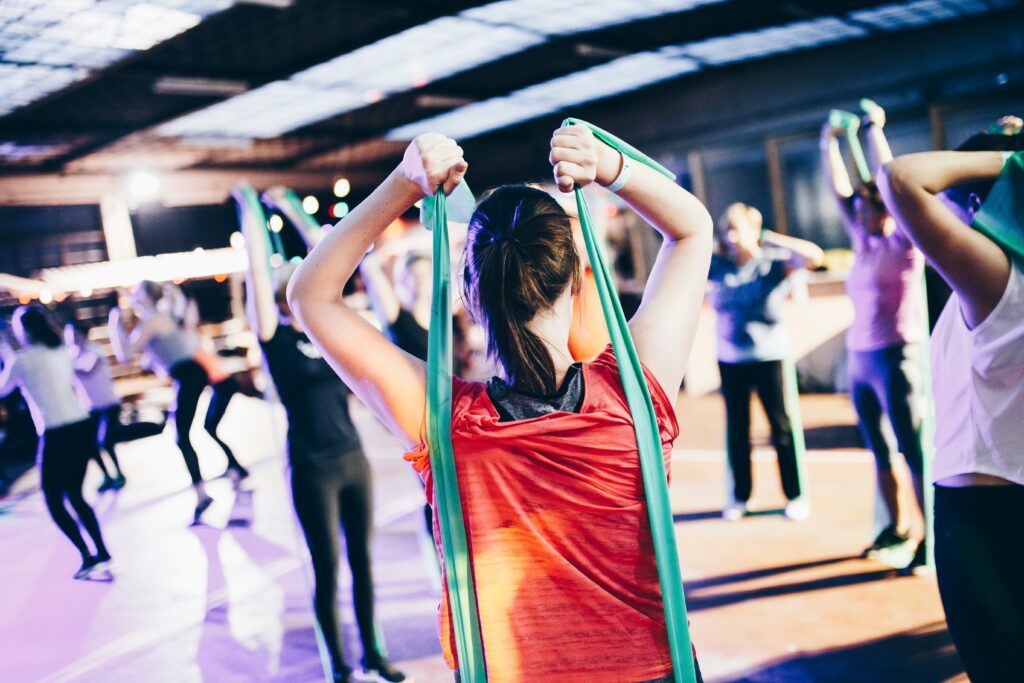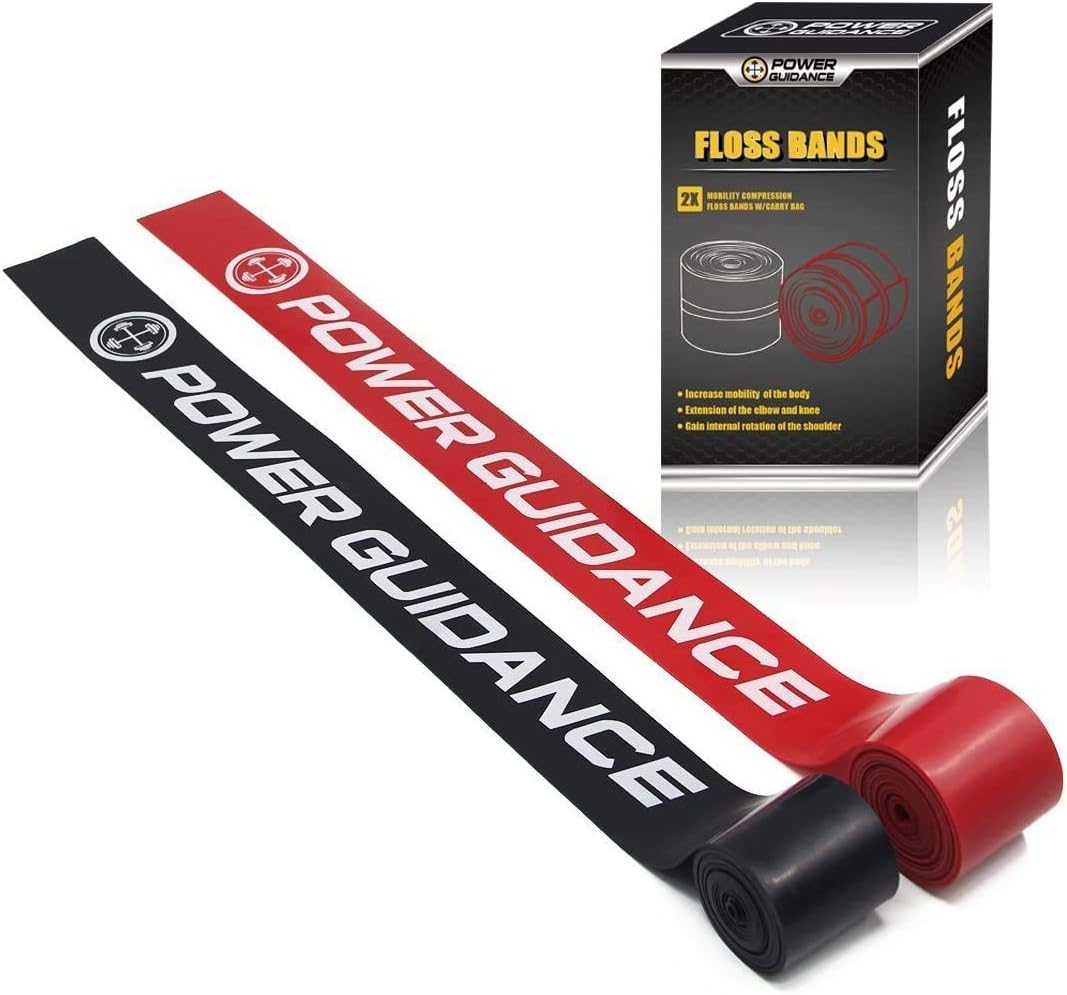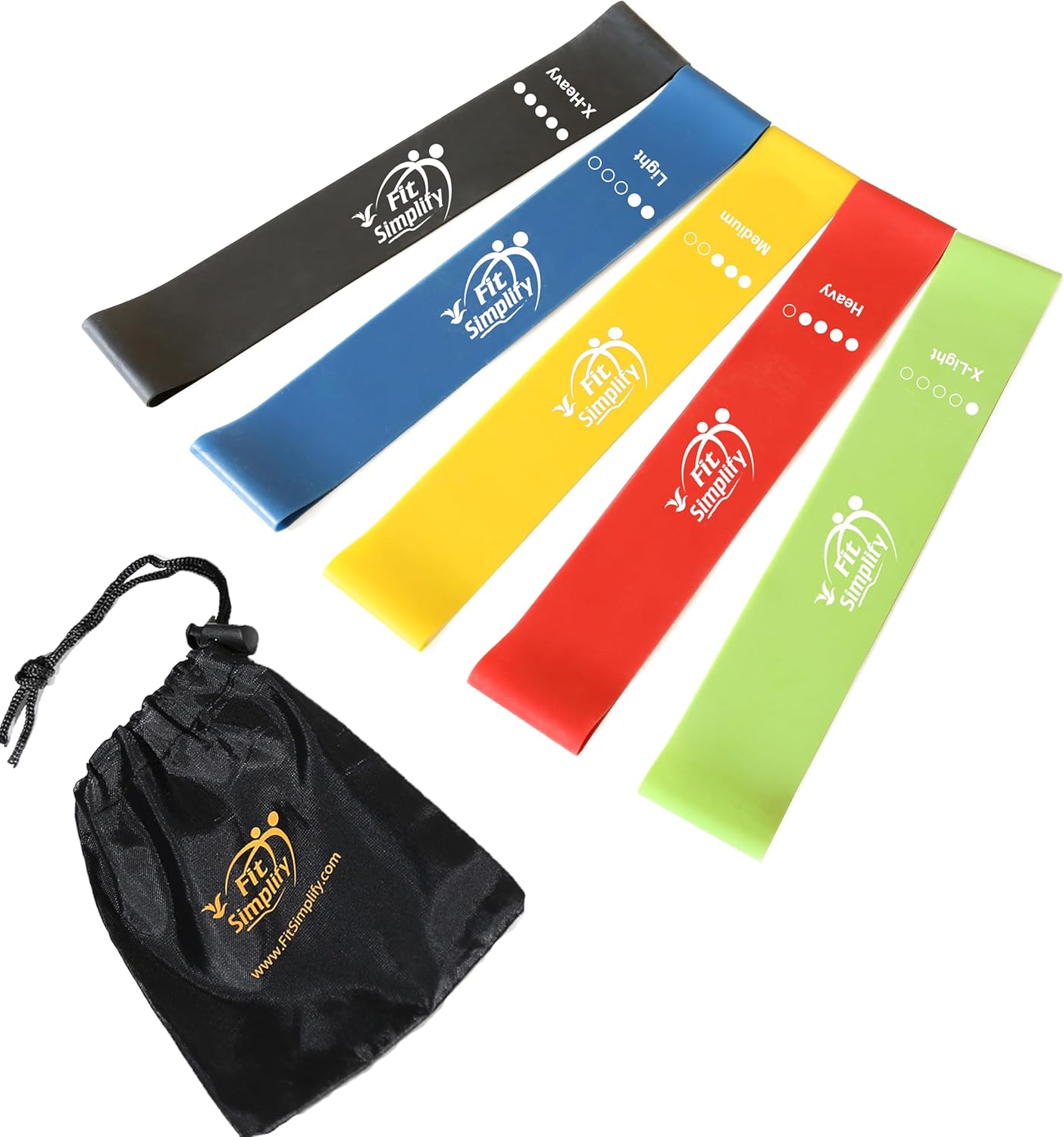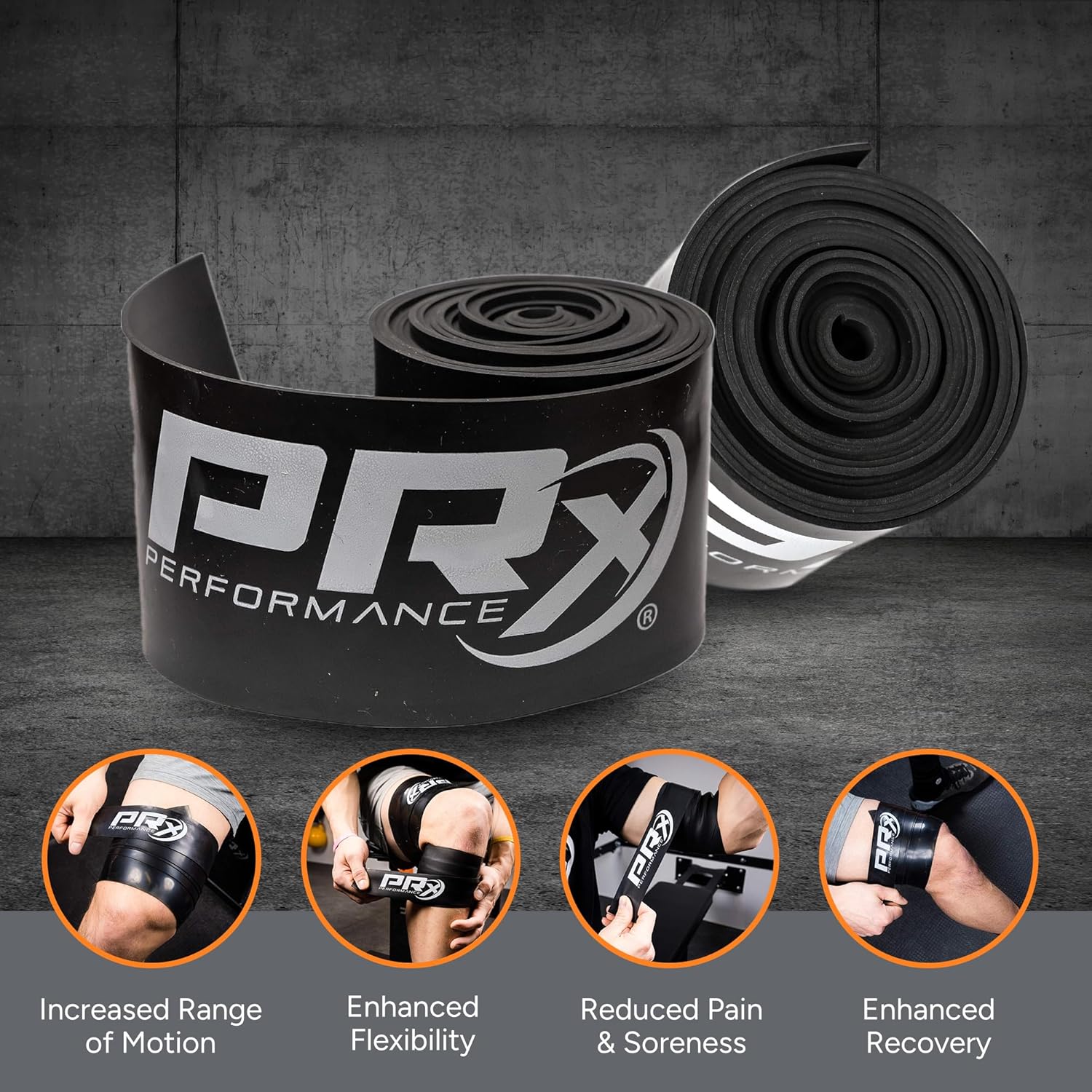Recovery vs Resistance Bands

Many fitness enthusiasts incorporate bands into their workout or recovery routines. However, not all bands serve the same purpose. Understanding the differences between recovery bands and resistance bands is crucial for optimizing your fitness routine and recovery process.
This comprehensive guide explores the unique characteristics, applications, benefits of both types of bands, and example products, helping you make informed decisions about which to use and when.
Understanding Recovery Bands
Recovery bands, also known as floss bands or compression bands, are essential tools for muscle recovery, injury prevention, and mobility improvement. These bands are typically thinner and more pliable than resistance bands, allowing for tight wrapping around muscles and joints.
Key Features of Recovery Bands
Recovery bands are usually made from latex or rubber, providing the necessary elasticity and compression. Their thinner profile allows for easier wrapping and a more comfortable fit compared to resistance bands. Recovery bands are generally shorter in length, as they’re designed to be wrapped around specific body parts as opposed to used for full-body exercises. The primary purpose of recovery bands is to provide compression and promote blood flow to targeted areas. While elastic, these bands are designed to provide consistent compression as opposed to variable resistance.
How Recovery Bands Work
Recovery bands function on the principle of blood flow restriction (BFR) training. When wrapped around a muscle or joint, they create a temporary occlusion of blood flow to the area.
Upon release, there’s a rush of blood back into the muscles, which can help reduce inflammation, improve mobility, speed up recovery, and enhance muscle activation.
This technique has gained significant popularity among athletes and fitness enthusiasts because of its potential to speed up recovery and improve performance.
Benefits of Using Recovery Bands
- Muscle Soreness Reduction: By promoting blood flow and reducing inflammation, recovery bands can significantly decrease post-workout muscle soreness.
- Improved Flexibility: Regular use of recovery bands can enhance joint mobility and muscle flexibility, leading to better overall movement patterns.
- Injury Prevention: By improving blood flow and supporting joints, recovery bands may help reduce the risk of injuries during physical activities.
- Enhanced Warm-up: Using recovery bands before a workout can help prepare muscles for exercise by increasing blood flow and improving mobility, leading to more effective training sessions.
- Faster Recovery: The compression provided by recovery bands can help speed up the recovery process between workouts or competitions, allowing for more frequent and intense training sessions.
One example of a highly rated recovery band set is the Power Guidance Muscle Floss Bands. You can check these out here.

Understanding Resistance Bands
Resistance bands are primarily used for strength training and muscle building. These versatile tools come in various resistance levels and are designed to add tension to exercises, making your muscles work harder throughout the range of motion.
Key Features of Resistance Bands
Resistance bands are typically made from thicker, more durable rubber or latex to withstand repeated stretching. Their increased thickness provides greater resistance compared to recovery bands. Resistance bands are generally longer, allowing for a wider range of exercises and full-body workouts. The primary purpose of resistance bands is to add resistance to strength training exercises. They offer variable resistance throughout the range of motion, providing more tension as the band stretches.
How Resistance Bands Work
Resistance bands function by providing constant tension throughout an exercise’s range of motion. As you stretch the band, the resistance increases, challenging your muscles in a unique way compared to traditional free weights. This continuous resistance helps to engage muscles more effectively, increase strength and muscle growth over time, improve muscle endurance, and enhance functional fitness.
Benefits of Using Resistance Bands
- Versatility: Resistance bands can be used to target virtually every muscle group in the body, making them incredibly versatile for full-body workouts. They can be incorporated into various exercises, from basic movements to complex compound lifts.
- Progressive Overload: By using bands of different resistance levels or combining many bands, you can easily increase the difficulty of exercises over time. This progressive overload is essential for continuous strength gains and muscle growth.
- Joint-Friendly: The smooth, consistent resistance provided by bands puts less stress on joints compared to free weights. This makes resistance bands an excellent option for people with joint issues or those recovering from injuries.
- Improved Muscle Activation: The constant tension from resistance bands can lead to greater muscle engagement throughout exercises. This increased activation can result in more effective workouts and better muscle development.
- Portability: Resistance bands are lightweight and easy to pack, making them ideal for travel or home workouts. They allow you to maintain your fitness routine regardless of your location or access to a gym.
The Color Code: Deciphering Band Strengths
Both recovery and resistance bands often use a color-coding system to show their strength or resistance level. However, remember that there isn’t a universal standard for these colors across all brands. Always check the manufacturer’s specific color guide to understand the exact resistance or compression level of your bands. Generally, the color progression from lightest to heaviest resistance follows this pattern:
Yellow: Extra Light
Red: Light
Green: Medium
Blue: Heavy
Black: Extra Heavy
Gold or Silver: Super Heavy
(For recovery bands, the colors might show the level of compression or the band’s width.)
One popular set of resistance bands to try is the Fit Simplify Resistance Loop Exercise Bands.

Who Should Use Recovery Bands?
Recovery bands are useful for a wide range of people:
- Athletes: Recovery bands help athletes manage the physical demands of intense training and competition. They can use these bands to speed up recovery between training sessions or competitions, reducing downtime and improving overall performance.
- Fitness Enthusiasts: For those who engage in regular exercise, recovery bands can help reduce muscle soreness and improve mobility. This allows for more consistent training and faster progress towards fitness goals.
- Individuals with Chronic Pain: People suffering from chronic pain conditions can use recovery bands to manage discomfort and improve circulation. The compression and blood flow stimulation can provide relief and promote healing.
- People Recovering from Injuries: Recovery bands support rehabilitation efforts by promoting blood flow to injured areas, reducing swelling, and preventing further injury. They can be used under the guidance of a physical therapist or medical professional.
- Office Workers: Those who spend long hours sitting at a desk can benefit from using recovery bands to reduce tension and improve circulation. Regular use can help counteract the negative effects of prolonged sitting.
When to Use Recovery Bands
- Before Workouts: Using recovery bands before exercise can improve blood flow and prepare muscles for physical activity. This pre-workout routine can enhance performance and reduce the risk of injury.
- After Workouts: Applying recovery bands post-exercise can help reduce muscle soreness and speed up recovery. This allows for quicker return to training and improved overall fitness progress.
- During Rest Days: On days off from intense training, recovery bands can be used to promote active recovery and maintain flexibility. This helps prevent stiffness and keeps the body primed for the next workout.
- For Injury Prevention: Regular use of recovery bands can help improve joint stability and muscle function, reducing the risk of injuries during physical activities.
Who Should Use Resistance Bands?
Resistance bands are suitable for a diverse group of people:
- Beginners: Novice exercisers can use resistance bands to learn proper form and technique with less risk of injury. The bands provide a gentler introduction to strength training compared to free weights.
- Advanced Lifters: Experienced weightlifters can use resistance bands to add variety to their workouts and target muscles differently. Bands can be combined with free weights to create unique challenges and break through plateaus.
- Elderly Individuals: Older adults can maintain strength and mobility with low-impact exercises using resistance bands. The bands provide a safe and effective way to combat age-related muscle loss and improve overall function.
- Travelers: For those who often travel, resistance bands offer a portable workout solution when away from the gym. They allow for maintaining a consistent exercise routine regardless of location.
- Rehabilitation Patients: Under professional guidance, people recovering from injuries can use resistance bands to gradually rebuild strength. The bands allow for controlled, progressive resistance that can be tailored to the patient’s needs.
When to Use Resistance Bands
- During Strength Training Sessions: Resistance bands can be used as a primary form of resistance or to supplement free weights in strength training routines. They can be incorporated into various exercises to target different muscle groups.
- For Warm-up Exercises: Light resistance bands can be used to activate muscles before more intense workouts. This helps prepare the body for exercise and reduces the risk of injury.
- In Circuit Training: Resistance bands can be easily integrated into circuit training routines, adding resistance to bodyweight exercises and increasing the overall intensity of the workout.
- For Stretching: Resistance bands can assist in achieving deeper, more effective stretches. They can be used to improve flexibility and range of motion in various muscle groups.
- In Physical Therapy: Under the guidance of a physical therapist, resistance bands can be used to perform prescribed exercises for injury recovery and rehabilitation.
Choosing the Right Band for Your Needs
When deciding between recovery bands and resistance bands, consider your primary fitness goals:
- If your focus is on muscle recovery, injury prevention, and improving mobility, recovery bands are likely the better choice. These bands excel at promoting blood flow, reducing inflammation, and enhancing flexibility.
- If you’re looking to build strength, increase muscle mass, or add resistance to your workouts, resistance bands are the way to go. They provide variable resistance that can challenge your muscles in unique ways and support progressive overload.
*Many fitness enthusiasts find value in having both types of bands in their arsenal. Recovery bands can help you prepare for and recover from intense workouts, while resistance bands can be the cornerstone of an effective strength training routine.
Another highly rated recovery band is the PRx Performance Muscle Compression Floss Band.

Another great set of resistance bands to try is the Veick Resistance Bands with Handles.

Pro Tips for Using Bands Effectively
- Start Light and Progress Gradually: Begin with lighter bands and gradually progress to heavier ones as you build strength and confidence. This approach helps prevent injury and allows for proper form development.
- Inspect Your Bands Regularly: Always check your bands for signs of wear and tear before use to prevent accidents. Look for cracks, tears, or thinning areas that could compromise the band’s integrity.
- Use Proper Wrapping Technique: When using recovery bands, avoid wrapping them too tightly or leaving them on for extended periods. This can restrict blood flow excessively and potentially cause harm.
- Maintain Tension Throughout Movements: With resistance bands, focus on maintaining tension throughout the entire range of motion for most benefit. This ensures constant muscle engagement and more effective workouts.
- Combine Band Exercises with Traditional Weightlifting: For a well-rounded fitness routine, incorporate band exercises alongside traditional weightlifting. This combination can target muscles from various angles and provide unique training stimuli.
- Use Bands for Assistance: Resistance bands can be used to improve your form in exercises like pull-ups or push-ups by providing assistance. This allows you to perform more repetitions and build strength gradually.
- Experiment with Band Placements: Try different band placements and angles to target muscles from various directions. This variety can lead to more comprehensive muscle development and prevent training plateaus.
- Incorporate Bands into Stretching Routines: Use resistance bands to enhance your stretching routine. They can help you achieve deeper stretches and improve overall flexibility and range of motion.
- Combine Recovery Bands with Light Activity: For enhanced recovery, try using recovery bands during light activity or movement. This can further improve blood flow and mobility compared to static use.
- Proper Care and Storage: Keep your bands clean and store them properly to extend their lifespan and maintain their effectiveness. Avoid exposing them to extreme temperatures or direct sunlight.
Key Takeaways
- Recovery bands focus on muscle recovery, injury prevention, and mobility improvement through compression and blood flow restriction.
- Resistance bands are primarily used for strength training, muscle building, and adding variable resistance to exercises.
- Both types of bands use color-coding systems to show strength or resistance levels, but these may vary between brands.
- Recovery bands are best for pre- and post-workout routines, injury prevention, and active recovery.
- Resistance bands are ideal for strength training, rehabilitation, and adding variety to workouts.
Consider how recovery or resistance bands could benefit your workout recovery routine or be incorporated into your active recovery time. For the latest on post-workout recovery information, check out more of our article at Recovery Essentials Hub.
This post contains affiliate links. If you click on one and make a purchase, I may earn a commission at no additional cost to you. Rest assured, I only recommend products or services I believe will provide value to my readers.


